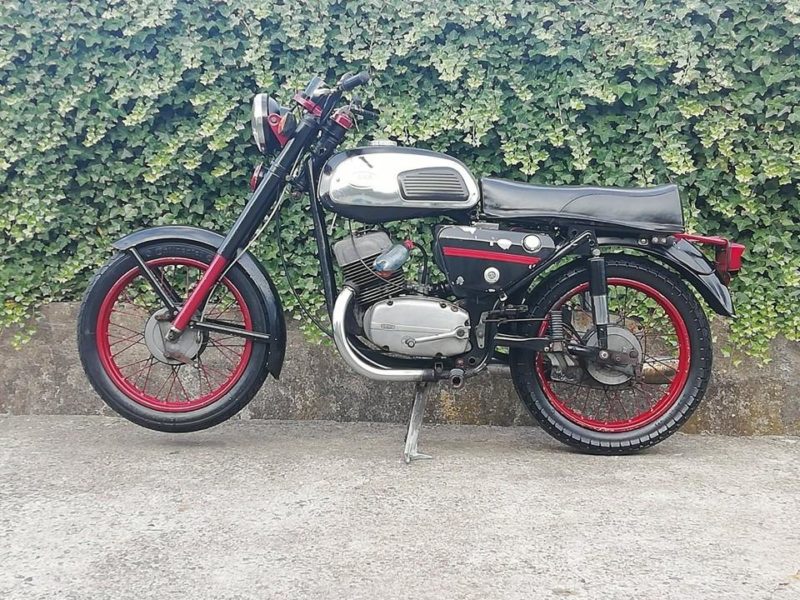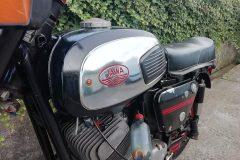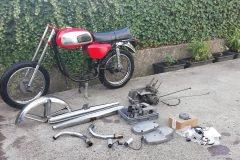Classics come in all shapes, conditions and sizes. And it is currently the time that they are offered in abundance again by changing the watch / waving off an entire generation. So a good time to buy a nice restoration project. And this story is hung on such a set of projects, Jawas with (incomplete) Belgian papers, the kind of projects that anyone with just a drop of motor oil in their veins can make very happy. If the paper shop is OK and the machines are established here. So we thank Alex Janssen for sharing his finds.
They are often finds, those projects, machines that had been forgotten for years or decades
They emerge when moving to smaller homes or after making the former owner's definitive last trip. As an aside: at first, relatives often think they can get the top prize for such machines, even if they are only challenging projects. This is usually because the former owner has told about his purchases within the family that his purchases were the best investment of his life. It usually takes a year of advertising without results and some family arguments before the next of kin are actually fed up with the case and the motorcycle or project for a realistic price find a new owner.
Of course, such a find can be in perfect condition
But experience has since shown that many of these types of 'projects' are not only technically, but also administratively incomplete. And that can be a nuisance when the engine is put back in order. And note: in Belgium, putting such a find or project on to name is a much more difficult matter than with us, as AMK reader Hans Wauters explained. The chance that such an improperly purchased paperwork ends as a garden ornament is therefore too great a chance to take a gamble and purchase a restoration project.
Things are better in the Netherlands
If you want to have the registration number of a vehicle registered in your name or you want to have your vehicle inspected at an RDW inspection station, you must identify yourself.
A problem may, however, be that the inspector at the RDW can decide to conduct a source investigation. This is to check whether the vehicle has been stolen. He does this based on the identity of the vehicle and with the help of information from different systems. It may be clear that extra attention is usually given to the history of motorcycles from that one brand from America. But other popular motorcycles also often get that little bit of extra attention where it can turn out to be very annoying if the engine block number on the screen lights up red because it is registered as stolen. But outside the theft check, there may be more reasons to conduct a source investigation. However, the RDW is generally sympathetic to clear enthusiasts. But enthusiasts must also have done their homework.
Proof of purchase is a prerequisite
That can even just be a handwritten receipt. That should be roughly in accordance with reality. A BMW R69S for 500 euros raises eyebrows. And of course, the papers must be in order as much as possible. It happens quite often that those papers have disappeared in the mists of time. The presence of the original number plate can then offer a solution. With the increasingly common import from other EU countries, some extra rules apply.
For foreign motorcycles within the EU
The RDW is investigating whether the foreign registration of the vehicle can be taken over. If the registration can be taken over, the RDW does not look at the technical condition of the vehicle. In all other cases it is. Do you drive the vehicle with the foreign registration plate and the valid foreign registration certificate to the RDW? Then you must take into account that the RDW is legally obliged to take the foreign registration certificate. After you have been at the RDW, you may no longer drive the vehicle on public roads, because you are no longer in possession of a valid registration certificate. In this case you can request a free one-day registration number from the RDW. This one-day registration is only valid on the day of the inspection.
You can use the vehicle (again) after receiving the Dutch registration certificate. A condition is that you must also comply with the other obligations associated with having a vehicle.
When presenting your find, it makes sense to do as much preliminary work as possible
Feel free to put time into making a presentation folder with the official data, leaflet material, the address of the brand or type club. Photos of comparable motorcycles on Dutch registration. That work. Of course, also ensure that the motorcycle is in good technical condition.
An unclear year
If RDW cannot determine the year of construction of an old-timer, a year of construction declaration can be requested. The FEHAC can issue this. FEHAC assesses the year of construction of the old-timer based on a source study. For this, the applicant must provide photos of the vehicle, chassis number and nameplates.
Ensure the correct exposure.
Take clear and sharp photos.
A resolution of 640 x 480 is already usable.
The demands
- The technical requirements are:
- overall:
- Claxon
- no play or wear on rotating parts
- no gas leak
- brake light (only starting from 1976)
- speedometer illuminated (only from 1976)
- Mirror (only from 1976)
- Lighting: low beam (with good light image), high beam, rear light, rear reflector, license plate light
- Tires: approved tires up to a minimum of 120km / h, a minimum of 1mm profile and no visible bumps or canvas
- Brakes: effective brakes required. A hydraulic brake (brake disc) must not leak, crack or break. All brake parts must be in good condition, with no cracks or broken parts.
- overall:
And when you have done everything, you can still look good vacation with your classic.







Tis not all that difficult and scary; don't be fooled by ghost stories ..
YOU as a provider must ensure that the paper shop is done, as Dolf indicates, the inspector in question also likes it if you provide supporting documents such as a photo reportage of the restoration, bills for block revision and / or purchased parts, etc.
Take reference books in the form of books from which you can prove that what you offer for testing is correct.
Do not expect the civil servant to help you with a vehicle that has a license plate but no papers; that is simply not his job ..